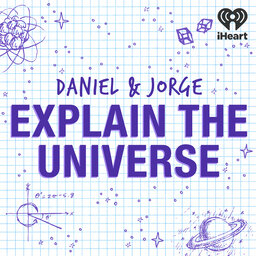Are there particles that don't have anti-particles?
Daniel and Jorge discuss whether Majorana particles are real, and crack a real life mystery about the fate of Ettore Majorana.
Learn more about your ad-choices at https://www.iheartpodcastnetwork.com
See omnystudio.com/listener for privacy information.
 Daniel and Jorge Explain the Universe
Daniel and Jorge Explain the Universe


